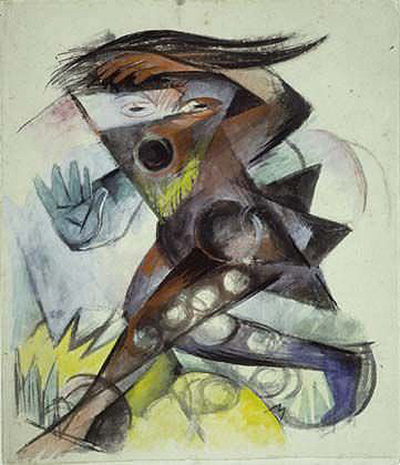This painting by German artist Franz Marc (1880-1916) depicts the character Caliban from Shakespeare's play The Tempest
Said to be one of the last plays Shakespeare wrote alone, The Tempest dates to around 1610-11. It is the story of Prospero, a sorcerer, and his daughter, Miranda, and their attempts at revenge after being overthrown and sent away from their home where Prospero was the rightful heir.
This happened when Miranda was only three years old. They landed on an island that was inhabited only by spirits, except for Caliban, who is represented in this painting.
Caliban is the half-human son of a deceased witch named Sycorax, the previous ruler of the island. Originally, Caliban helps Prospero and Miranda adapt to life on the island while they teach him language and religion.
However, in the present time of the play, Caliban is a slave to Prospero and has come to resent Propero and Miranda. The feelings Miranda and Propero have for Caliban are equally negative as they see him as a monster.
Caliban is represented through many forms in various pieces of art and in film and theatre adaptations of the play. He is usually described as being a half-human, half-devil monster with deformities and portrayed as a wild-man, a beast-man or even a mix of fish and man.
His interpretation by readers and scholars is mixed as it is difficult to know whether he should be hated or pitied. It makes sense, then, that Franz Marc would have depicted Caliban in this abstract form.
While the character in the painting does have fairly human-like legs, arms and hands, his face and body are represented with shapes that are very inhuman. It is also clear that Caliban is in a nature scene as mountains are visible in the background and plants and rocks are seen around his feet.
Some believe Caliban is representative of colonialism, so perhaps this painting is a comment by Franz Marc on the subject. Or, it could simply be Marc being inspired by Shakespeare to create his own image of Caliban.
Whatever the case may be, it is quite a striking painting as well as a unique interpretation of this interesting character.




